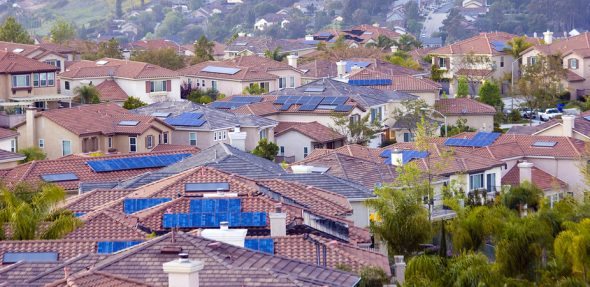As we wrote here last Tuesday, Queenslanders who install solar on their rooftops these days get little to nothing for the electricity they export to the grid – not since the removal of the 44c/kWh tariff in late 2012.
And while that hasn’t stopped households in the Sunshine State from switching to solar by the thousands, it has meant people are not saving nearly as much as they think they will on their electricity bills, as fixed costs outweigh solar power gains.
An example of just such a lop-sided electricity bill was sent to us last week by a RenewEconomy reader from Queensland’s Brighton – a suburb on the northern fringes of Brisbane City and part of the Energex network – who’s family installed a 1.5kW solar system in April 2014.
“We thought that would be enough for a small household,” the reader said, adding that initially their retailer, Origin Energy, were paying 14c/kWh for the solar power they exported to the grid, but then this was dropped to 6 cents.
“What shocked me about the bill (pictured below) was how much we’re producing (543kWh), how little we’re using (from the grid) (165kWh) for the 91 day period, and yet how much we’re still paying!! Most of it is the Supply charge of $75.91,” she writes.
Indeed, there are two problems here. One is that the household is getting a pittance for the electricity exported back into the grid – less than for the imports even though they are more than three times higher in volume; and the second is the size of the fixed component. What greater incentive could there be for households to store their electricity in battery storage, or even quit the grid?
Of course, with electricity demand falling – thanks in large part to the popularity of rooftop solar – power companies are using the fixed cost components of their billing systems to help cover their own fixed costs, while also compensating for lower usage by consumers. They have been warned, even by regulators, that this is self-defeating.
As was noted in a Victorian study on power prices released last week, in some cases households are paying up to $1,000 a year for gas and electricity before having switched on a single light or appliance.
“Over the past five years, the fixed charges for electricity have more than doubled and the fixed charge for gas has gone up over 60 per cent,” said Gavin Dufty, a spokesperson for St Vincent de Paul, who commissioned the study. One fixed tariff, he said, had been noted at $2 per day for electricity.
The Victorian research also showed that the price-spread – the difference between the best and the worst market offers – meant that households with typical electricity consumption (4800kWh) could save up to $500-$800 per annum, depending on their network area) if they switched to the best market offer.
As our reader puts it: “We need to try to find a better deal with another company, though as such a small consumer we don’t have much bargaining power.”










